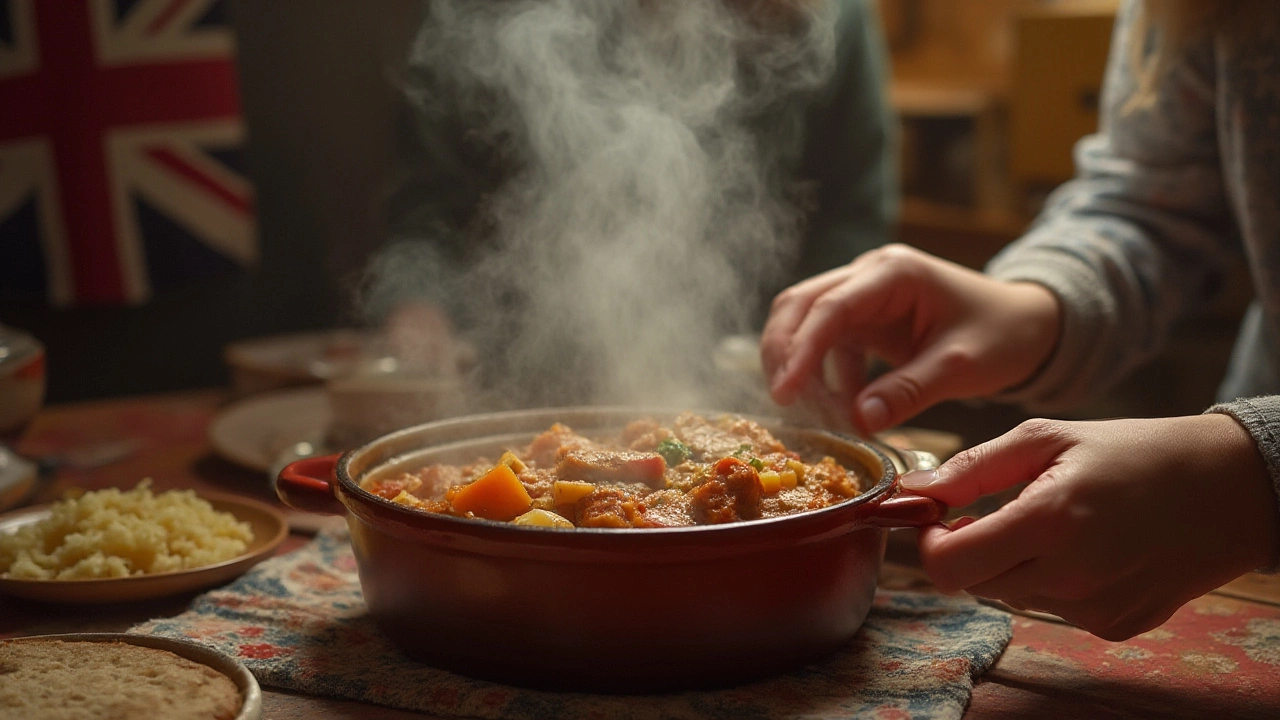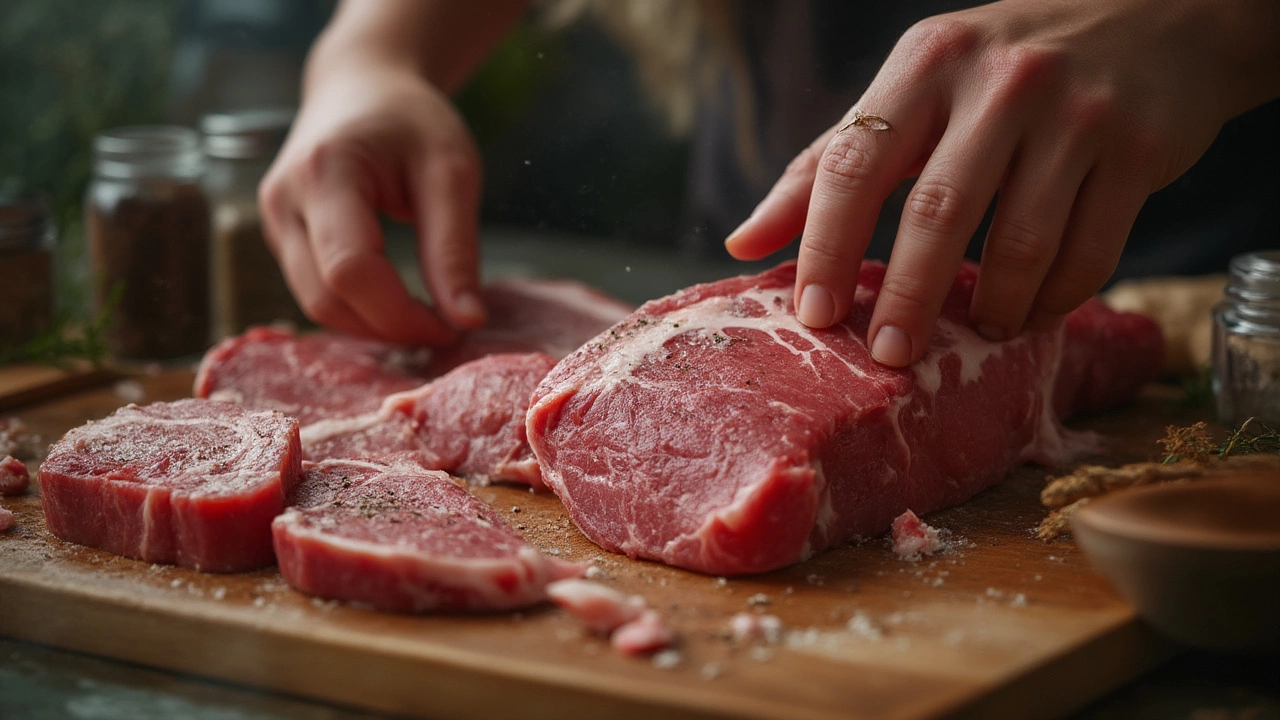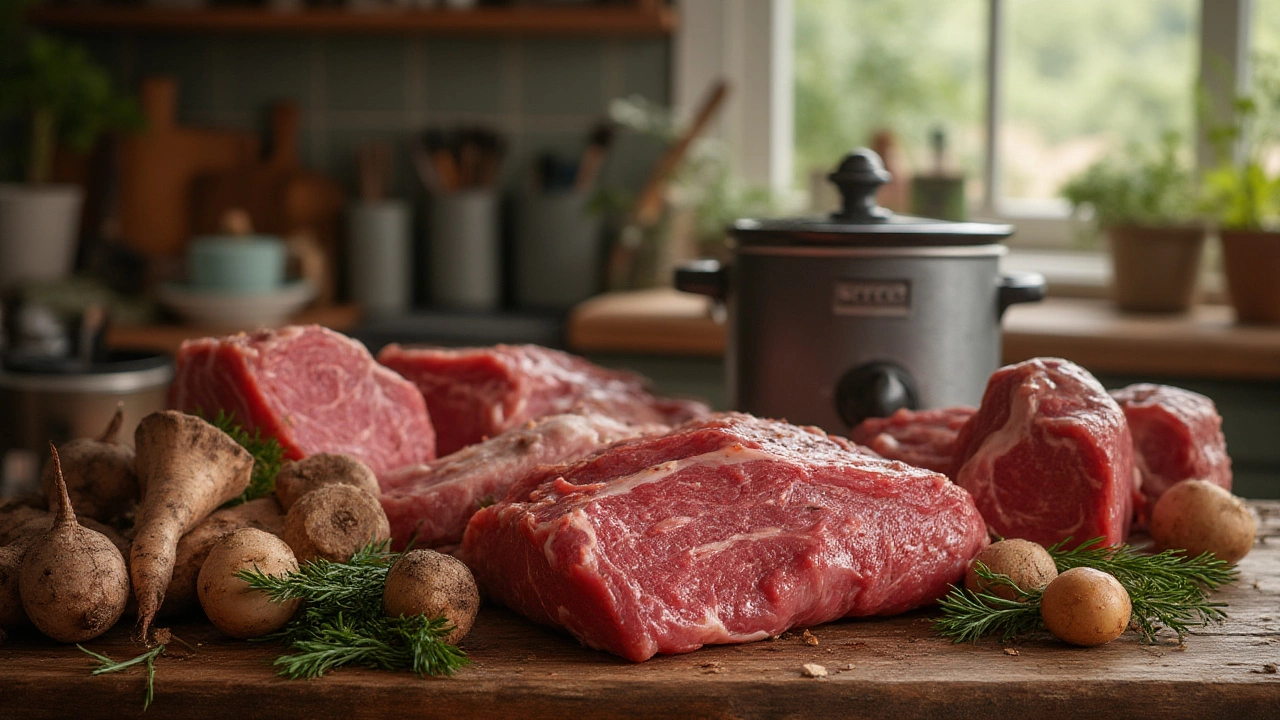Cold weather in Melbourne can sneak up on you, but nothing answers the call of a chilly night quite like the sweet, savory smell of a slow-cooked dinner simmering away all day. The secret isn’t just in the sauce, though—it’s in the cut of meat you choose to throw in the pot. Not all cuts play well with low and slow heat, and some downright shine after hours of gentle bubbling. If you’ve ever bitten into a tough piece of steak after letting it stew for hours and wondered what went wrong, you’re not alone. I’ve burned my fair share of dinner plans and trust me, watching Quentin look at his plate with that subtle mix of hope and skepticism is enough motivation to hunt down what works best in the slow cooker.
The Cuts That Love Low and Slow
When it comes to the slow cooker, forget expensive fillets or prime cuts. You want cheap, tough, hardworking muscles—the ones that get a workout and are loaded with connective tissue and fat. That’s because those tough fibers, when coaxed by time and moisture, melt into silky, flavorful strands that fall apart at the touch of a fork. Best meat for slow cooker isn’t about price—it’s about the payoff after hours of patience.
Let’s talk beef first. There’s a reason why stews, pot roasts, and Sunday briskets have been a cornerstone of comfort food for so many families. Cuts like chuck roast (sometimes just called blade in Australian butcher shops), beef brisket, short ribs, oxtail, and shin (beef shank) are perfect for braising. In my house, beef chuck is a staple—affordable, easy to find, and nearly impossible to mess up if you let it go for eight hours on low. Brisket, with its deeper, almost smoky flavor, is sensational for slow-simmered barbecue or a classic Jewish-style pot roast. Short ribs, though a bit pricier these days, have a depth and richness that’s next-level when paired with hearty root veggies and a splash of full-bodied red wine.
Pork plays just as well. Pulled pork—the classic American staple—is always made with pork shoulder or pork butt (sometimes labeled Boston butt, just to confuse things). Both cuts are marbled with fat and full of collagen that turns meltingly soft over hours. If you’re considering a slow-cooked pork stew, a simple barbecue shredded pork, or a rustic Mexican-style carnitas to tuck into soft tortillas, this is your go-to. Pork belly might not be first on everyone’s list, but in our house it’s Emilia’s guilty pleasure when she craves something a bit decadent. Let it go in ginger, soy, and a dash of star anise and watch it transform.
And lamb—don’t get me started. Lamb shanks, neck chops, shoulder roasts—these are the underdogs of the slow cooker world. Lamb shanks are especially forgiving, turning from sinewy to spoon-tender after hours with a splash of Shiraz, garlic, and rosemary. Neck chops, too, hold up beautifully, giving a richer flavor than you’d expect. If a full lamb shoulder appears at a good price, grab it and thank yourself come dinner time; it soaks up flavors like a sponge.
Here’s a quick cheat sheet of the top slow cooker champs:
- Beef: Chuck roast/blade, brisket, short rib, shin, oxtail
- Pork: Shoulder, Boston butt, pork belly, spare ribs
- Lamb: Shanks, shoulder, neck chops, breast
Before I forget, here’s a handy table showing how these popular cuts stack up for tenderness and fat content after eight hours in the slow cooker:
| Meat Cut | Type | Tenderness after 8 hrs | Fat Content |
|---|---|---|---|
| Beef Chuck | Beef | Very Tender | Moderate |
| Beef Brisket | Beef | Very Tender | High |
| Pork Shoulder | Pork | Very Tender | High |
| Lamb Shanks | Lamb | Very Tender | Moderate-High |
| Pork Belly | Pork | Meltingly Tender | Very High |
| Lamb Shoulder | Lamb | Very Tender | High |
Choosing the right cut isn’t just tradition—it’s science and experience mixed together in every bite.

Why Tough Cuts Win the Slow Cooker Game
Ever wondered why that grocery store sirloin turns into shoe leather after a whole day in the crockpot? It’s not just bad luck. Lean, tender muscles (like sirloin, tenderloin, or chicken breast) don’t have the fat and collagen that transform tough meat into fork-tender shreds. Fat and connective tissue are the slow cooker’s best friends: as they break down, they enrich the cooking liquid and turn your meal into something that tastes like hours of labor, even if the machine does all the heavy lifting.
Take beef chuck, for example. The shoulder muscle does a lot of heavy work on the animal, which means it’s loaded with sinew and flavor—exactly what you want. After a full day’s cook, all that tough muscle gives way to juicy, soft, flavor-packed meat. Same goes for pork shoulder. The ratio of meat to fat is close to perfect, which is why it stays so moist and makes great leftovers. Use it for everything from pulled pork to Asian-style braised pork with ginger, garlic, and soy.
Lamb shanks might not be the first thing people reach for, but they’re my personal favorite—a little messy, sure, but who cares when the payoff is this good? They’re packed with collagen, so they start off gnarly and end up unrecognizable in a good way: silky, sticky, and loaded with flavor that clings to roasted veggies and rich, winey sauces.
Many cooks also forget about secondary cuts like oxtail, beef cheeks, and even pig’s trotters. Oxtail, in particular, is finding its way back into kitchens because it brings a depth and body you just can’t fake. A good oxtail stew, swimming with carrots, celery, and parsnip, transforms into pure magic after simmering all day. Beef cheeks are gaining ground in Australian restaurants too, thanks to their meaty punch and melting texture. They’re fantastic for braised ragu tossed with pasta—it’s a dish Quentin actually fights over.
Here’s a quick tip: when shopping, look for cuts with visible marbling. That white, streaky fat running through the muscle means flavor and moisture. If you’re worried about it being too fatty, remember that most of it will melt out into the sauce, which you can skim if you prefer a lighter dish.
And don’t just stick to the same recipes—these cuts are flexible. Any cut on the tougher, fattier side is only going to get better with a low, slow braise. Throw in aromatics like rosemary, garlic, onion, chili, ginger, or bay leaves, and don’t be shy with spices. The long cooking time means they’ll have time to mingle and work their way through every bite.
Some families have traditions tied to slow cooker favorites. A friend of mine swears by a shoulder of lamb cooked with anchovies and olives every time his in-laws visit. Another neighbor insists nothing but beef cheeks go in his Sunday stew. You’ll find your own rhythm, too, as you taste, adjust, and experiment.
Personal tip: cut your big roasts into a few large pieces rather than keeping them whole. This lets the flavor soak in better, and you get more of that juicy crust on each chunk. Also, brown the meat first if you have time. It makes a huge difference. Emilia used to think it was a fussy, cheffy move, but tasted side-by-side, it’s hard to argue with the results.
Let’s not overlook food safety here. Collagen starts to break down at about 82°C (180°F), so a low cooker setting is ideal. Never cook frozen meat directly—instead, thaw it first. And if you’re slow-cooking chicken, stick to dark meat (like thighs and drumsticks), which holds up to the heat without drying out. White meat tends to get stringy and bland after hours in the pot.

Tips to Unlock the Best Flavor and Texture
You’ve picked your perfect cut, but that’s only half the story. Now it’s about stacking the deck in your favor with a few insider tricks to make sure dinner is unforgettable—whether you’re feeding a hungry kid after soccer or a house full of dinner guests who know their way around a slab of brisket.
First up: don’t crowd the slow cooker. If you heap in too much meat, it steams rather than braises, which can lead to bland, soggy results. Give those chunks a little breathing room in the pot. Add just enough liquid to reach about a third of the way up the meat—don’t submerge it, or you’ll drown the flavor. The meat will release juices as it cooks, so err on the side of less to start, then top up if you need to.
Layer your flavors. Start with onions, garlic, carrots, or celery at the bottom—these soak up juices and fat and create a base that’s pure gold. If you want an even bigger umami punch, add tomato paste, a spoon of miso, or even a splash of fish sauce. Don’t knock it ‘till you try it—just a dash can deepen stews and braises. Don’t forget a glug of wine, beer, or cider, depending on your recipe. The alcohol mostly cooks off, but it brings all the flavors together.
Spices and herbs are your slow-cooking secret weapon. Sturdy woody herbs like thyme, rosemary, and bay leaves hold up well, while fresher herbs like coriander or parsley are best tossed in at the end for a hit of color and brightness. Australian native ingredients, like wattleseed or lemon myrtle, can add a twist to classic recipes—worth hunting down if you’re up for something different.
As for timing: be patient. Most tough meats need 8 to 10 hours on low to reach that perfect state. The temptation to peek is real (I’m guilty of it, too), but every time you take the lid off, you lose heat. Leave it alone and go about your day: work, school run, whatever life throws at you. The end result is worth it.
If you want a thicker sauce, resist the urge to add flour at the start—it tends to go gluey. Instead, mix a little cornflour with water and stir it in during the last 30 minutes. Or let the sauce bubble, uncovered, to reduce right before serving.
Here’s another tip: let the finished meat rest in its juices for 10-20 minutes before serving. Slicing too soon makes all that flavor spill out onto the board. Quentin actually prefers the day-after leftovers (scooped into a sandwich or wrap), and there’s serious science behind it—overnight chilling gives flavors time to meld.
Slow cookers are forgiving, but don’t push your luck with food safety. Cook meats to a safe internal temperature (at least 63°C for most red meats, 75°C for poultry). Keep leftovers in the fridge within two hours, and never reheat more than once.
With a bit of planning and patience, you end up with meals that cost less, taste better, and feed everyone with leftovers to spare. That’s the real magic. When I walk in the door to Emilia’s approving nod and Quentin’s nose already sniffing out what’s in the pot, I know I’ve landed on something right. Try a new cut next time and see what happens. The results rarely disappoint.

